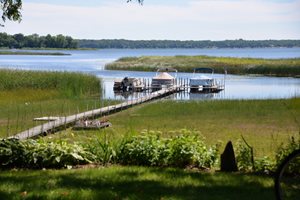Part of planning for appropriate local water management is to assess the water resource-related issues in your community, both those that already exist and those that are likely to occur given changes in development or other foreseeable changes. Assessing these issues helps your community to better understand how to prevent or address those issues. Your local water management plan needs to include an assessment of both existing and potential water resource-related problems in your community

Minimum Requirements:

-
Include an assessment of the existing water resource related problems in your community.
-
Include an assessment of the potential water resource related problems in your community.
-
Include a list or map of impaired waters within your community as shown on the most current 303d impaired waters list

Get More Out of Your Plan:
(You may be able to get some of this information from the appropriate watershed organization(s) plan.)
-
Prioritize the assessment of the water quality and quantity problems in your community.
-
Provide an explanation of how your community is, or intends to be, involved in the development of total maximum daily load studies (TMDLs) for the impaired waters.
-
Watershed Restoration and Protection Plans (WRAPs) are taking the place of and including future TMDL work in Minnesota. For areas not covered by TMDLs and where WRAPs are planned, provide an explanation of how the community is, or intends to be, involved in the development of the WRAP should be included in the plan.
-
If a TMDL or WRAP has been completed and the community has been given a waste load allocation for impaired waters in the community, you should include implementation strategies, including funding mechanisms that will allow the community to carry out the requirements and recommendations directed to them in the WRAP or TMDL.
-
If your community has a designated trout stream, you should identify actions in your plan to address the thermal pollution effects from development.
-
If your community has special waters, such as outstanding resource value waters, you should include information on how the community will meet State requirements for development near these waters.

We Can Help!
-
We have maps of impaired waters for the metro area only that you can use in your plans.
-
We have a map of priority lakes in the metro area that you can use as a starting point to evaluate and prioritize your lakes.
-
We have monitoring information on around 200 lakes in the metro area, 21 stream sites and 22 river locations available at metrocouncil.org/streams or upon request. This data can help with assessing existing and potential issues in your community.
-
We have information on groundwater sources and recharge for your community.